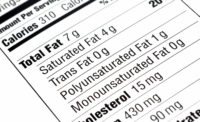How merchandisers can attract, engage & convert more customers
Displays play a fundamental role in serving the needs of retailers, brands and shoppers.

From capturing customer attention to promoting brand awareness and generating sales, displays play a fundamental role in serving the needs of retailers, brands and shoppers. Yet, this lesson is often lost on refrigerated and frozen food retailers, with the end result being a long, sterile line of identical merchandisers. With nothing to distinguish one from the other, shoppers zero in on their usual purchases, with little to distract them from their regular routine.
There’s a lost opportunity here, when an eye-catching display or a time-limited promotion can attract notice and potentially entice a customer to try something new.
Here’s how processors and retailers can optimize the profitability of refrigerator and freezer merchandisers:
Clean, well-lit interiors showcase products
Start with premium merchandisers that are built to withstand traffic and the repeated opening and closing of doors. Broken doors that fail to close, burned-out lightbulbs or dated (and often noisy) equipment suggest that the unit may no longer be operating properly, creating the perception that products stored inside may have reached unsafe temperatures.
If you think of retail as theater and merchandisers as stages to showcase products, the importance of bright, well-lit interiors becomes obvious. They should look modern, sleek and appealing, and brightly illuminate the cabinet and product presentation with LED lighting.
Signs are impactful
Signage can be thought of as a silent salesperson, using powerful, sales language to stop shoppers in their tracks. Freezer merchandisers offer a blank canvas to boost brand awareness, promote sales and trigger impulse purchases. Glass door refrigerated merchandisers are an effective means of identifying product offerings through colorful door stickers, banners and decals and bright, high visibility backlit signage. These can add interest to a wall of refrigerator merchandisers. But, they should provide quick information, be easily understood and not confuse customers. Plan to change up the decals as often as possible to promote interest and keep customers engaged.
Visibility is the key to sales
Make sure shelves are fully stocked. Orderly, stocked shelves have a direct impact on product sales, conveying freshness and attention to stale dates. Use the proper guides or dividers to keep products in line. If baskets are required, try sectioning them with dividers to increase organization and ease of selection. Ideally, the merchandiser manufacturer will allow you to customize shelves, racks, baskets and point-of-purchase (POP) materials. Be strategic when doing the pack-out. Give prominence to best-selling products when ordering products for the display case. Consider sight lines and ensure the order from low to high and left to right makes sense.
Location, location, location
When shopping, customers want easy access into and around a store and an equally easy exit. Better sales happen when obstacles are kept to a minimum and shoppers can quickly scan the store and find their desired product. The fastest moving or highest demand products should be placed on shelves at or around the 60-inch mark, using the thigh-to-eye principle. Due to their size and power requirements, most standard, reach-in refrigerators and freezers are placed along the peripheral walls. This might be convenient, but may not be as visible to customers as an end cap or in-line placement might be.
Merchandising the front of the store for POP sales
Customers almost universally want to make quick work of any shopping trip, but in the process, must stop at the cash desk or POP to pay. As a result, think of it as the “nerve center” of the store. Merchandising the POP can pay off with incremental sales, but only if displays are changed or rotated frequently. If possible, work with retailers to ensure that products close to the cashier are of an impulse or seasonal nature and priced below $10. That will generate the maximum impulse sales possible and provide a refreshed product experience for repeat customers. Signage to reflect this will have customers stopping and paying attention to new things on display (even if they aren’t actually new, just newly featured).
A lot goes into packaging products to appeal to the everyday consumer. That effort can be wasted if they are lost amid racks full of competitors. Anything you can do to make them stand out to shoppers increases the chance of sales.
Looking for a reprint of this article?
From high-res PDFs to custom plaques, order your copy today!





